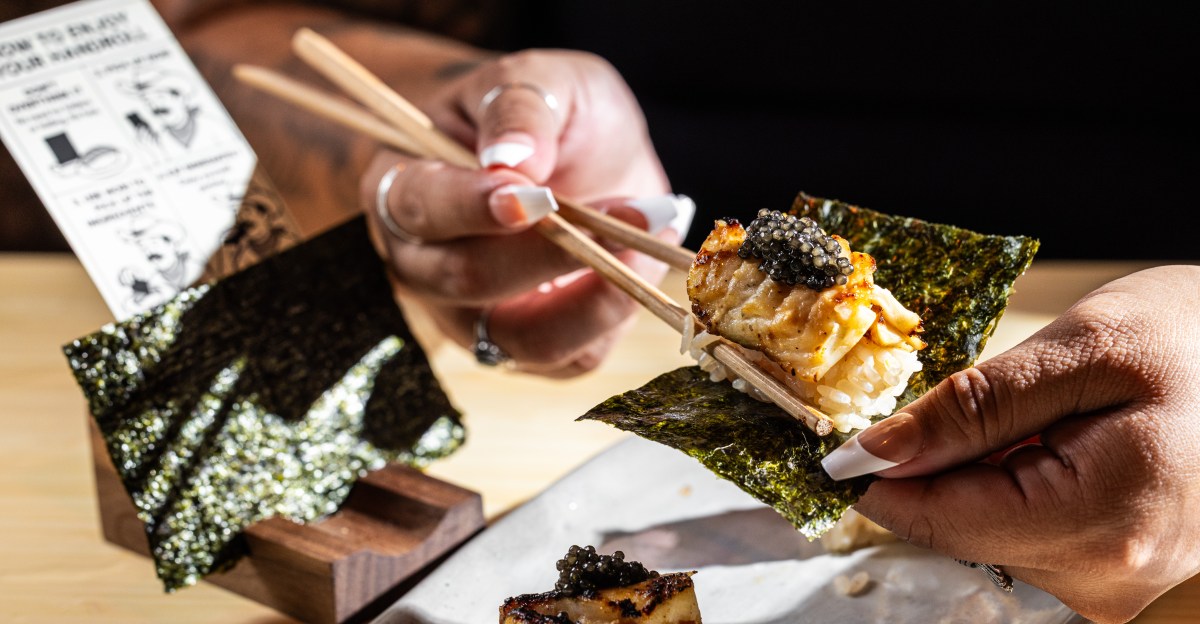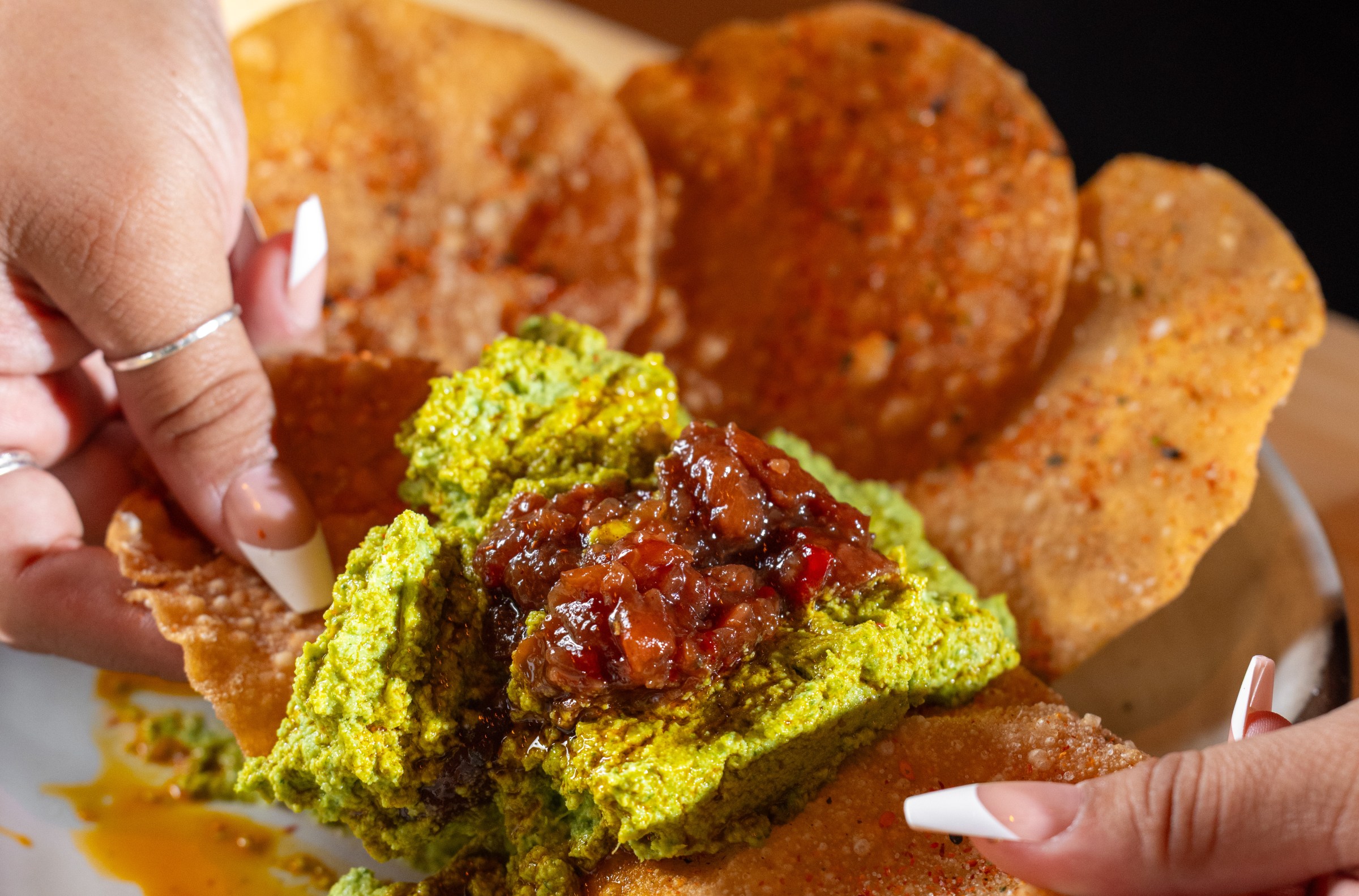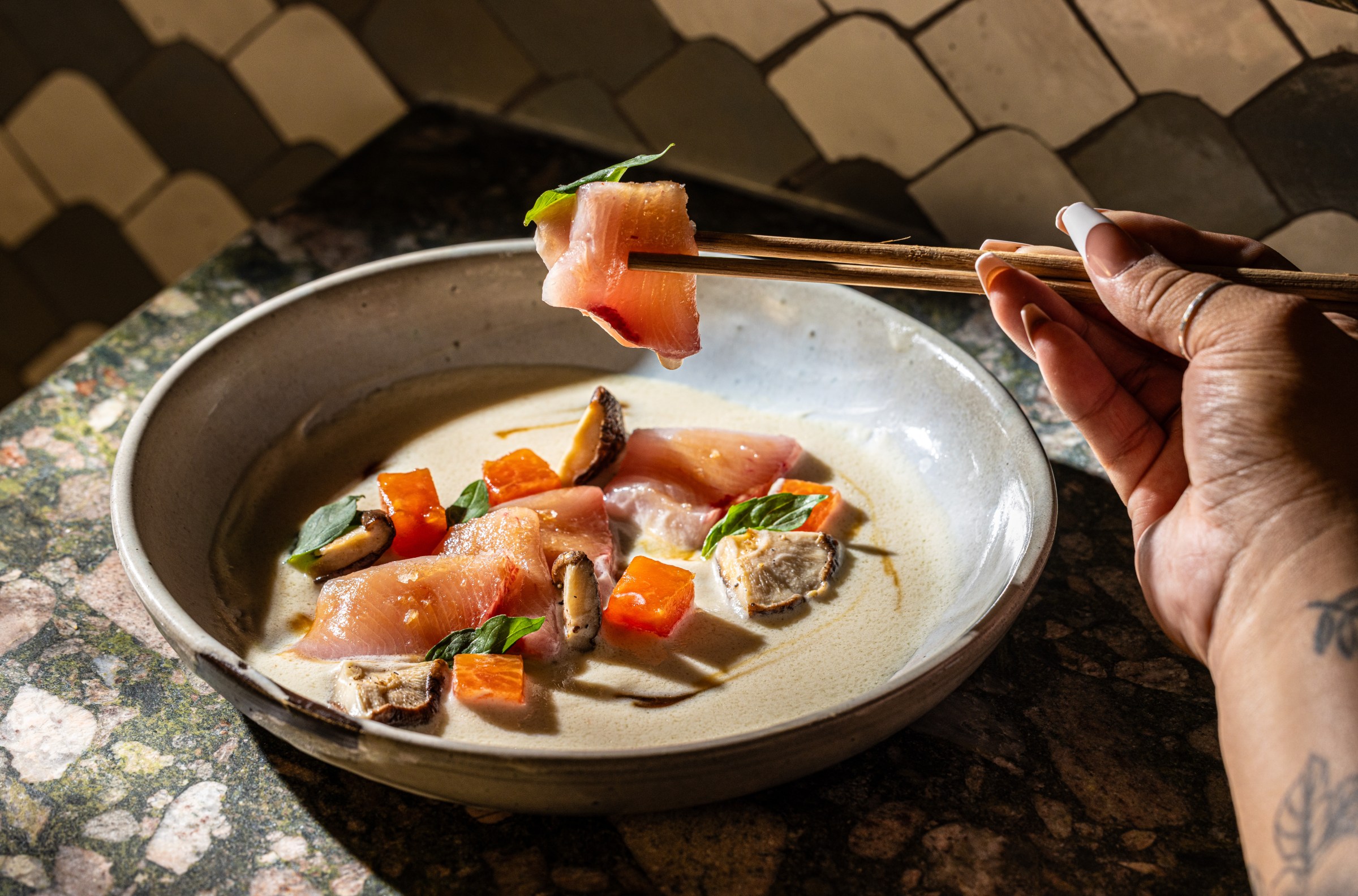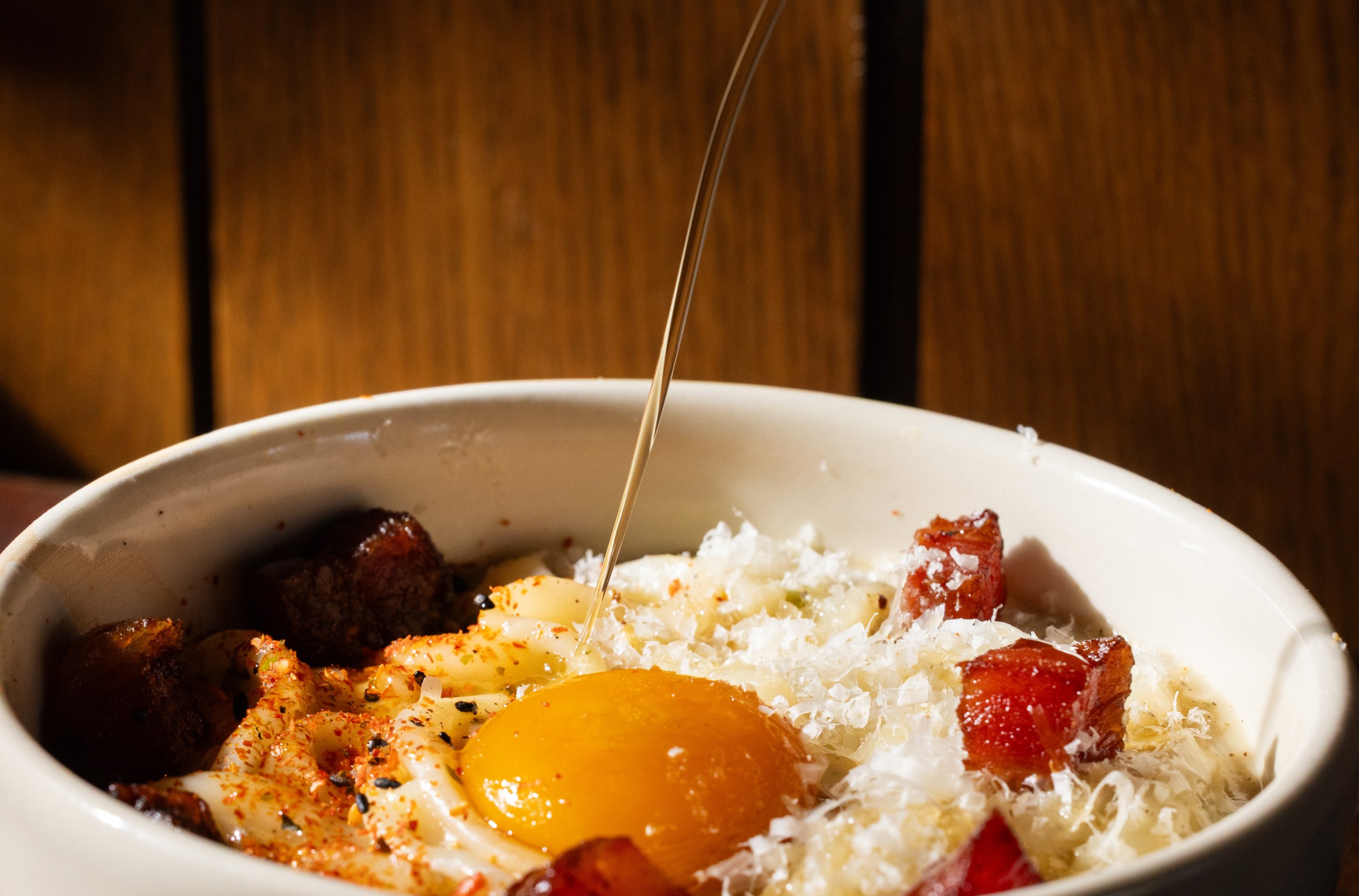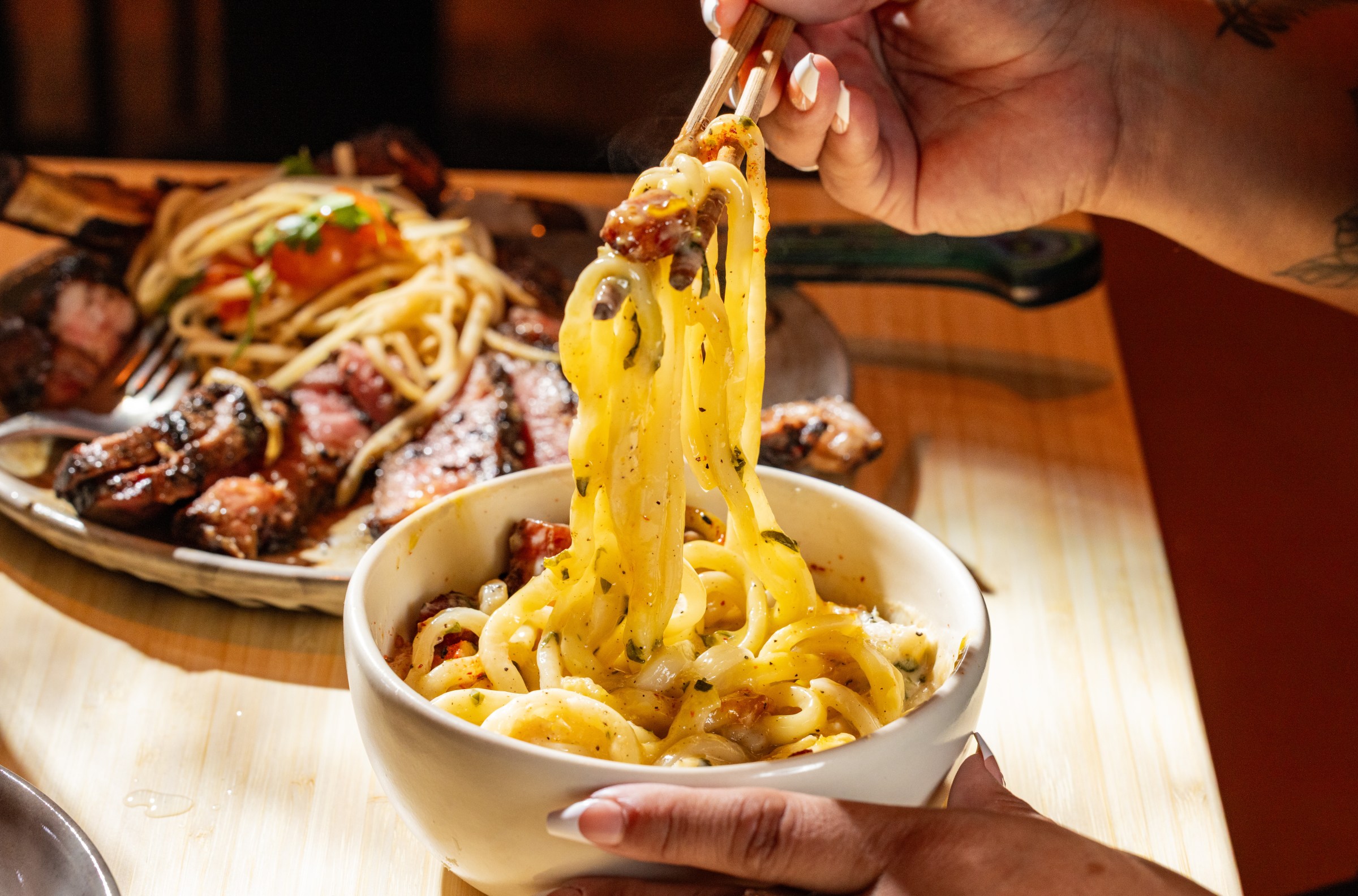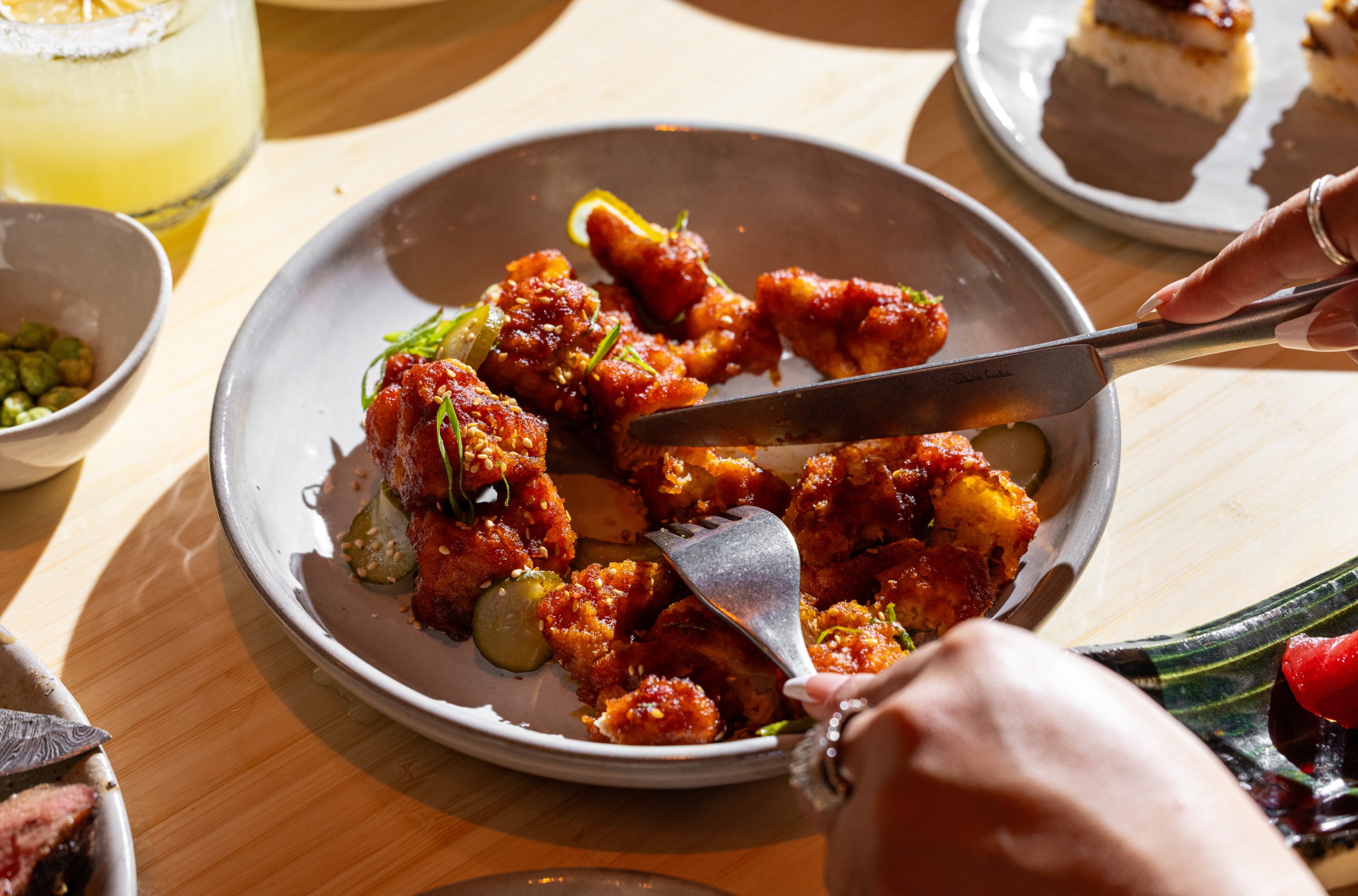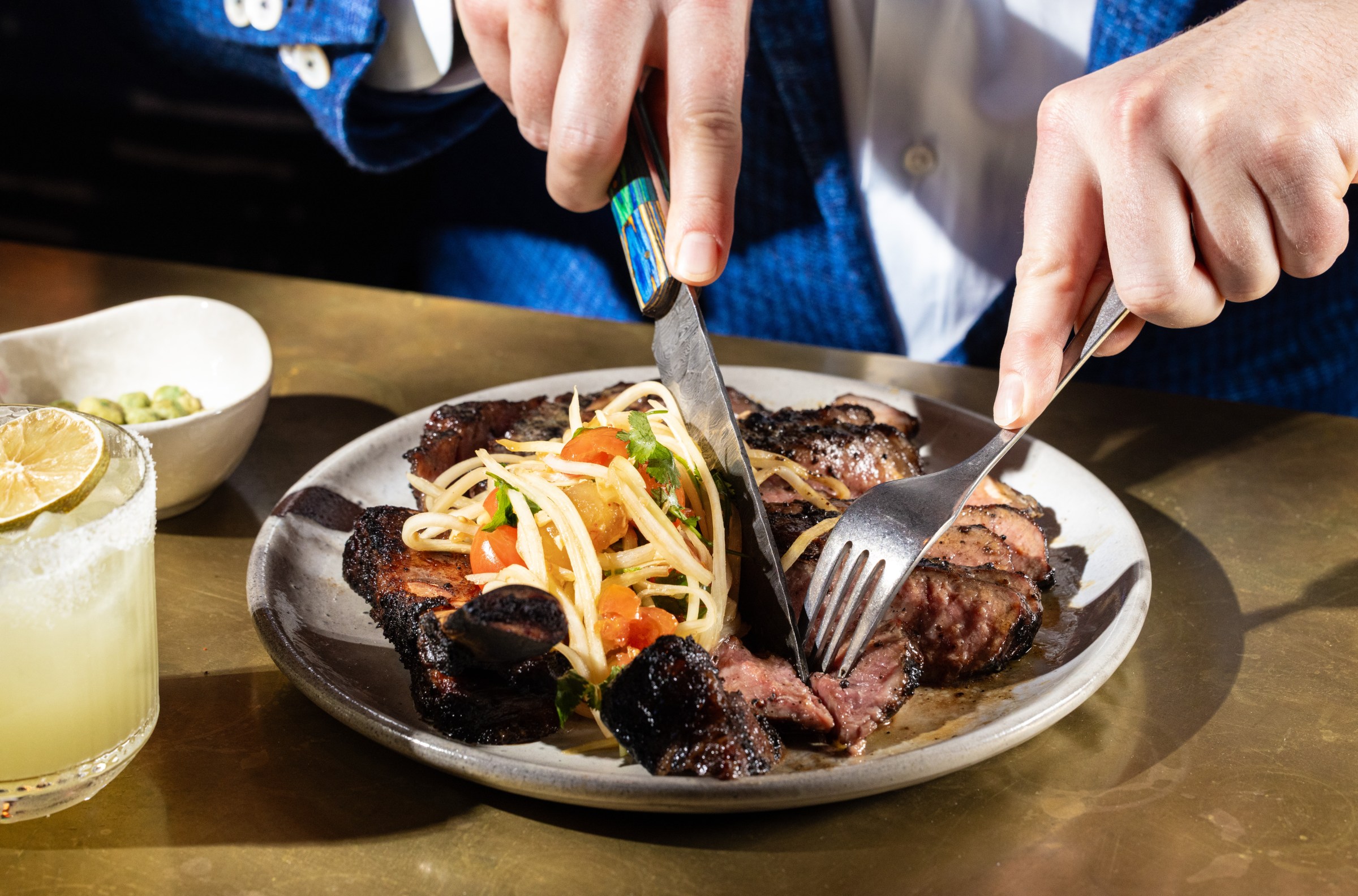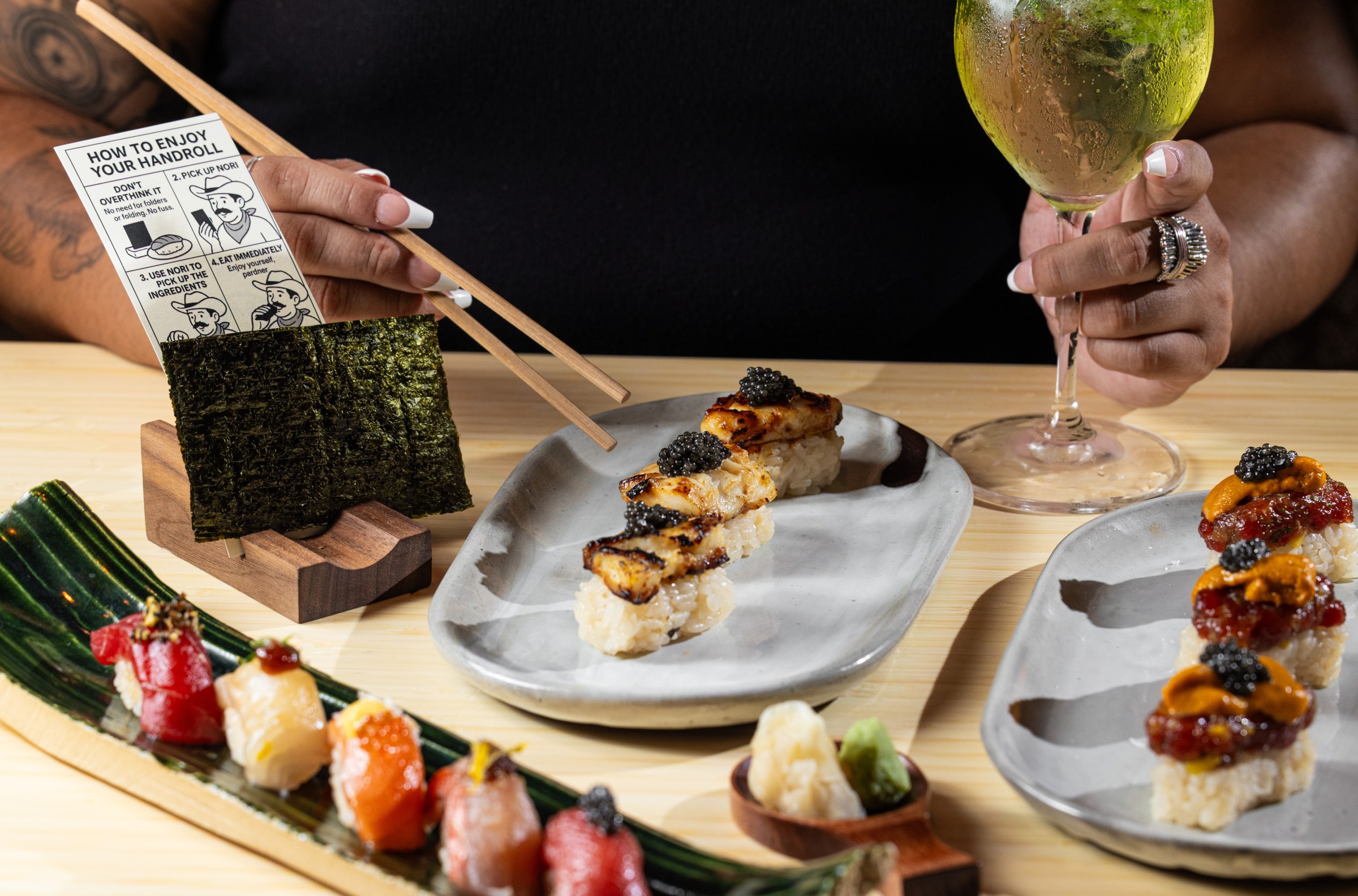Every time Duro Hospitality opens a new restaurant, it immediately becomes the hottest and hardest to get reservation in town. The trend continues with Norman’s Japanese Grill, which officially opened on Friday, August 1, in the space that used to be occupied by the much-lauded restaurant Homewood. The menu marries Japanese dishes, spices, and cooking styles with the same from archetypes of the Old West — with a few elements of other cuisines mixed, including Chinese, Korean, and Thai flavors.
“I think as the concept developed, to be a Western Japanese restaurant, it gave us license to do whatever fits in that box,” Duro co-founder Chas Martin says. “And it’s a pretty big box.”
Interestingly, the idea of how to interweave the two came from Duro partner Corbin See, who pointed out that Japan has a niche country music scene and appreciation for cowboy culture as presented in old films and television, influenced by the Allied Forces occupation of Japan following World War II. “He brought this concept up, of all of these Japanese designers who were heavily inspired by ‘the Wild Wild West’ and underground dive bars inspired by Texas honky tonks,” says Martin.
Eater sat down with Martin and Jared Harms, Duro’s culinary director, to learn about five dishes on the menu at Norman’s.
Edamame hummus with pear chutney. Kathy Tran
Harms: “It’s edamame with fresh jalapeño, which we have to blend three times to get to the correct consistency. We go from a food processor into a Vitamix, and the end result is a little granular. It’s vegan and craveable, and punchy in the center, where it has an aromatic plum chutney that has a lot of herby, sweet, and acidic flavors to it. We went through a lot of phases of figuring out which crispy things to use to dip. Ultimately, we went with wonton chips dusted with our shichimi togarashi [a Japanese spice blend of chile pepper, sesame seeds, orange peel, poppy seeds, ginger, and sometimes nori seaweed]. It’s a pretty way to start the meal. The chips stay in our dehydrator and are warm all through service.”
Hamachi meets tom kha sauce in this crudo. Kathy Tran
Harms: “I’m a big fan of the way the pureness of the tom kha sauce in this hamachi plays with the fish caramel, along with the sweetness of the papaya and charred shiitake mushrooms. This plate came together over six or seven tastings, and the final is the best variation. We knew we wanted to do crudo our way. More than anything, we wanted to make sure you could taste the fish. Tom kha isn’t Japanese, but it is part of the culture of chef Benjamin Norton, who runs the kitchen at Norman’s, and this is a recipe he has worked with for his entire career.”
The oils are the secret to transforming this carbonara into a Japanese-inspired dish. Kathy Tran
Harms: “It’s a nod to our love of noodles, and is a nod to our first restaurant, the Charles, which is always in our hearts. Of course, there is a twist in the carbonara. It has egg yolks cured in tare, shiro dashi [a Japanese soup base made with white soy sauce, kombu, and bonito], dashi, and black pepper. There is also pancetta that is diced large and rendered daily. If you want to, you can use a fork to eat it and twirl it. There are pickled mustard greens in it as well, along with fresh lemon juice.”
You can eat these noodles with chopsticks. Kathy Tran
Martin: “The pickled mustard greens were, to me, the aha moment of this dish, when we all were like, That’s the best.”
One of the rule breaking dishes is this Korean fried chicken. Kathy Tran
Harms: “This dish began as an idea for karaage chicken, but it evolved. The best iteration of the dish wasn’t a dry batter, but the wet batter was what we liked best. It has been the most consistently delicious. Chef Ben Norton, who is half Korean, wanted to bring his mom’s gochujang sauce to Norman’s. The chicken gets tossed in that sauce, pseudo hot chicken-style, but only about 80 percent, so you still get extra-crispy bites. The plate also has pickled cucumbers, negi [long green onions], and toasted sesame seeds.”
Cowboy rib-eye with a Southeast Asian salad — that’s about as Japanese Western as it gets. Kathy Tran
Harms: “Having a papaya salad with a big, fatty rib-eye was an idea from the beginning. We loved the punchy, spicy, acidic, and crunch accompaniment with a fatty, crusty steak. We weren’t always planning to use dry-aged meat, but it worked out well. We are using a 45-day dry-aged cut that gets crusted with salt and black pepper on the grill. We brush it with tare glaze as a last step before it comes off the grill. The way those two flavors dance together is amazing, as is electing to add honey butter torched tableside.”
Martin: “We kept the grill from Homewood, so that’s a massive component of the cooking here.”
The sushi counter spread. Kathy Tran
If you only order one piece of sushi: Make it the bluefin tuna with foie gras shredded over it. Norman’s has three sushi chefs. “We use the otoro, the fattiest part, and top it with pickled red pearl onion, crispy garlic, and then hit it with frozen foie gras.”
Pro-tip from Martin: You have to order the Crazy 88, a mezcal margarita with wasabi and lemongrass.
Norman’s Japanese Grill is open now at 4002 Oak Lawn Avenue in Dallas, serving dinner. Reservations can be made on OpenTable.
